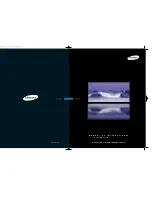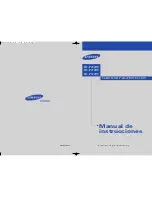
Service and maintenance
18
Emergency ascent
The Dräger Life Preserver rescue vest permits a very rapid
ascent. During the diving training proper ascent methods must
be trained to prevent embolism and/or decompression acci-
dents.
— Emergency ascent methods for self-contained diving appa-
ratus are described in the training instructions of e.g. the
navy.
After the dive
●
Ensure that the cylinder valves are closed. Open the leg
straps, then open the hip strap and pull the
Dräger Life Preserver rescue vest over the head.
●
Press all water completely out of the vest and partially
inflate the vest. Fill the vest one third via the mouthpiece
with fresh water and flush the inside. Hold the vest down
and allow water to flow out through the oral inflator. Rinse
the whole system in clear fresh water.
●
Rinse all metal and moving parts with fresh water, allow to
dry and check for damage.
●
Remove air cylinders from the Dräger Life Preserver rescue
vest and fill. Remove damaged or used CO
2
cartridges and
replace with new ones. Store Dräger Life Preserver rescue
vest at a cool dry location; do not store underneath other
equipment.
Dependent on the circumstances requiring an emergency
ascent and the conditions the diver finds himself in (e.g.:
depth, water in the diving apparatus, etc.) it is recommended
in emergencies to only activate the filling source on the right-
hand side. If the appropriate positive buoyancy is achieved,
the left filling source can be used as reserve if required. If
more gas is needed to achieve a positive buoyancy the
reserve on the left-hand side must be activated.
NOTICE
Immersion of the vest in warm fresh water after diving remo-
ves salt and mineral deposits better than rinsing. By briefly
immersing the vest in warm water the deposits on the inside
are dissolved which are not removed during a normal rinsing
process. Avoid water temperatures above approx. 49
o
C
(120°F) during rinsing or immersion. The buoyancy control
device could be damaged.
After removing the air cylinders rinse them in fresh water and
briefly open the valve to remove moisture from the valve
(valve outlet facing down). If the cylinder is empty, shake the
cylinder whilst holding the outlet valve down to remove water
residue.
Service and maintenance
The maintenance requirements for the Dräger Life Preserver
rescue vest are divided into planned and unplanned procedu-
res. The applicable national rules and regulations must be
observed.
Maintenance requirements
Maintenance
CODE
Time period
S
Every 6 months
A
Every year
24M
Every 2 years
60M
Every 5 years
R
Depending on situation and condition
U
Unplanned
M-1R
Monthly or as required
Designation
When
Inspection and cleaning of the
Dräger Life Preserver rescue
vest
Every 6 months
Air cylinder interior
As per national regulations
Checking the pressure relief
valve
Every year
Hydrostatic test of the air cylin-
ders
As per national regulations
Repair cylinder valve
As required/per condition
Test via magnetic marking
As per national regulations/
after repair and replacement of
components
Fill air cylinders
Before every dive
Pre-diving procedures
Before every dive
After-diving procedures
After every dive
Leak and functional test
Before every dive
Weigh CO
2
cartridges
Before every dive
Remove / replace cylinder/
valve
As per national regulations
Repair buoyancy control
device
If damaged
Repair pressure relief valve
If damaged or if incorrect deli-
very is observed
WARNING
The fitting of parts not approved by Dräger to the
Dräger Life Preserver rescue vest is not permitted and can
result in injuring the diver. Ensure that only tested parts are
used during maintenance.
Summary of Contents for Life Preserver
Page 1: ...de Gebrauchsanweisung Seite 2 en Instructions for Use Page 12 Dräger Life Preserver ...
Page 22: ...22 ...
Page 23: ...23 ...







































